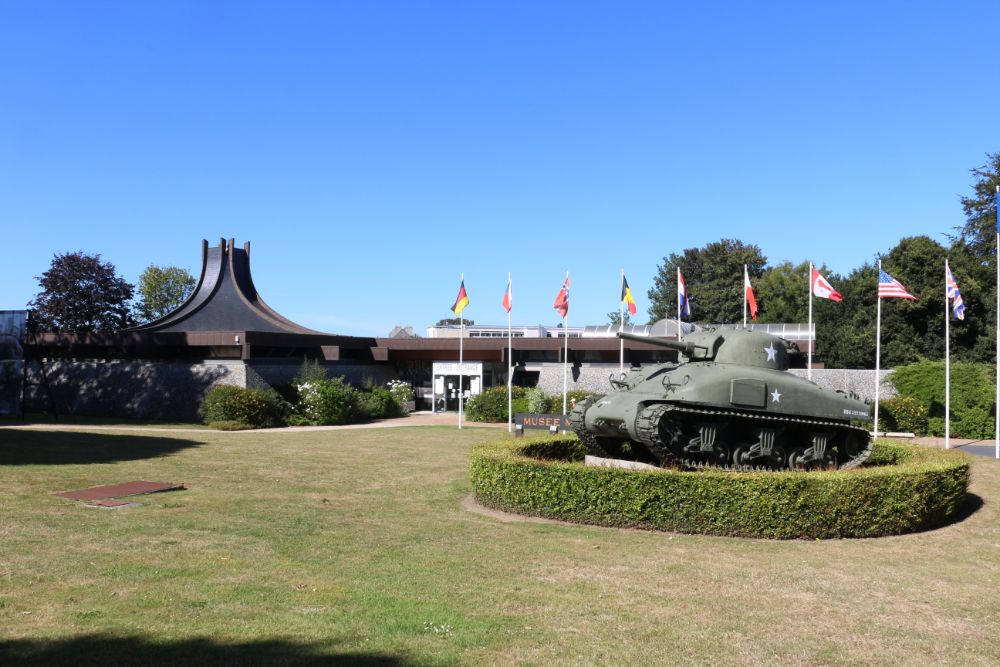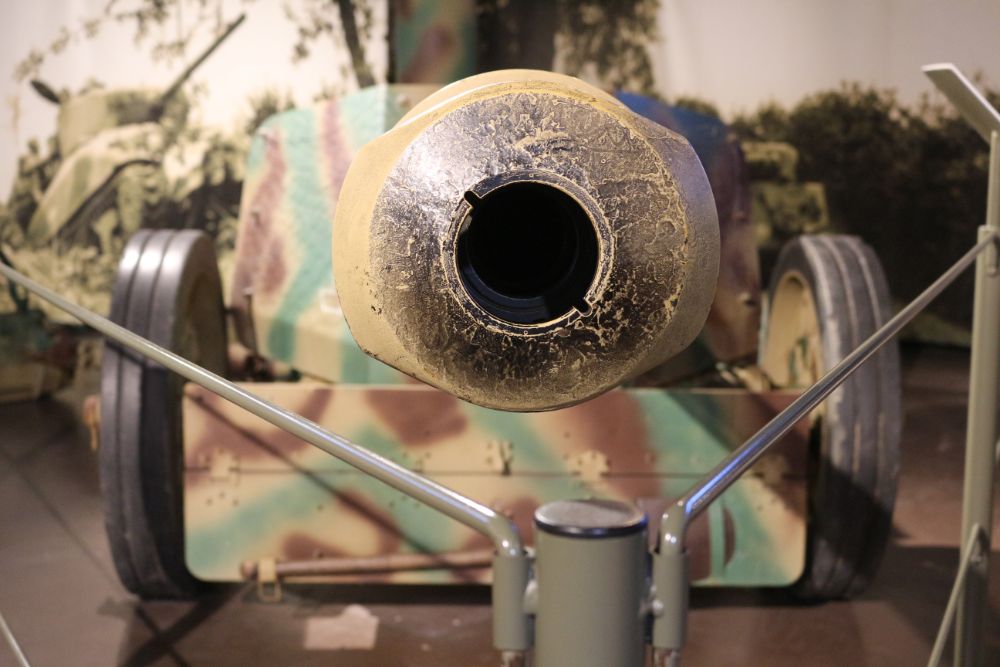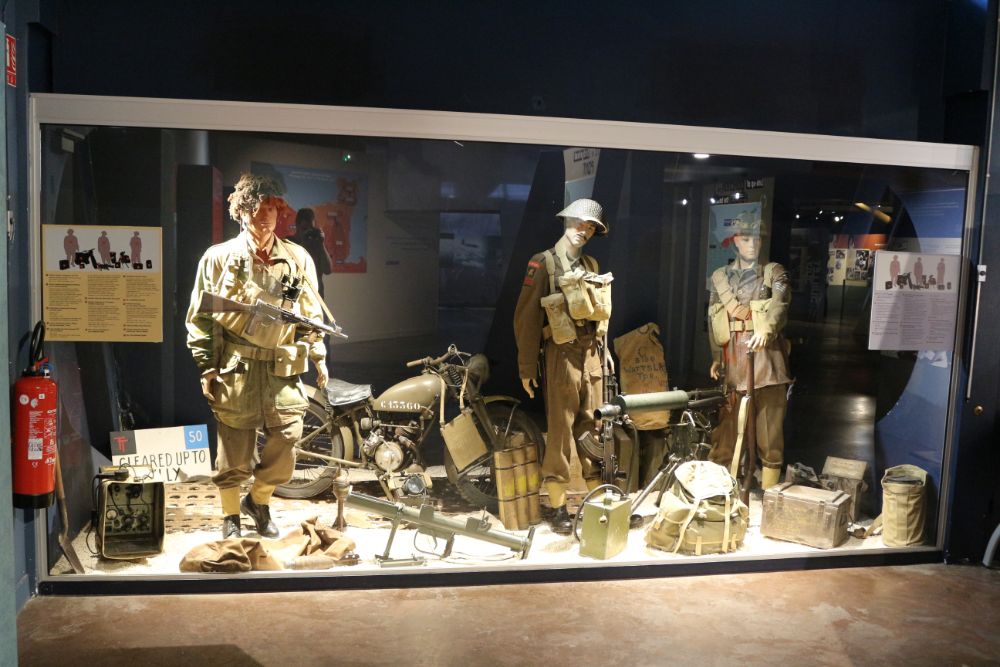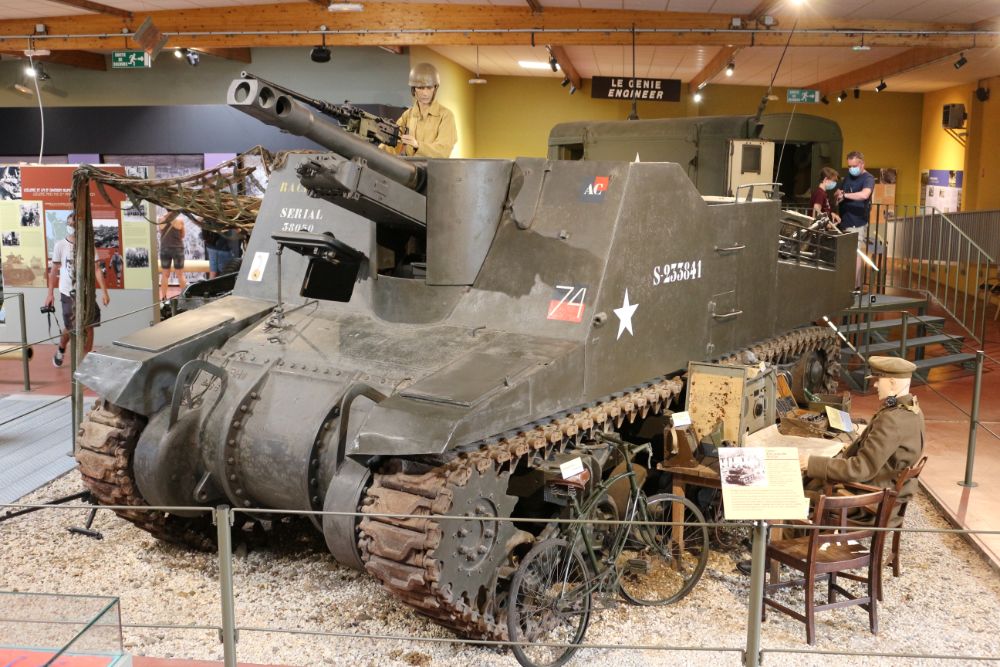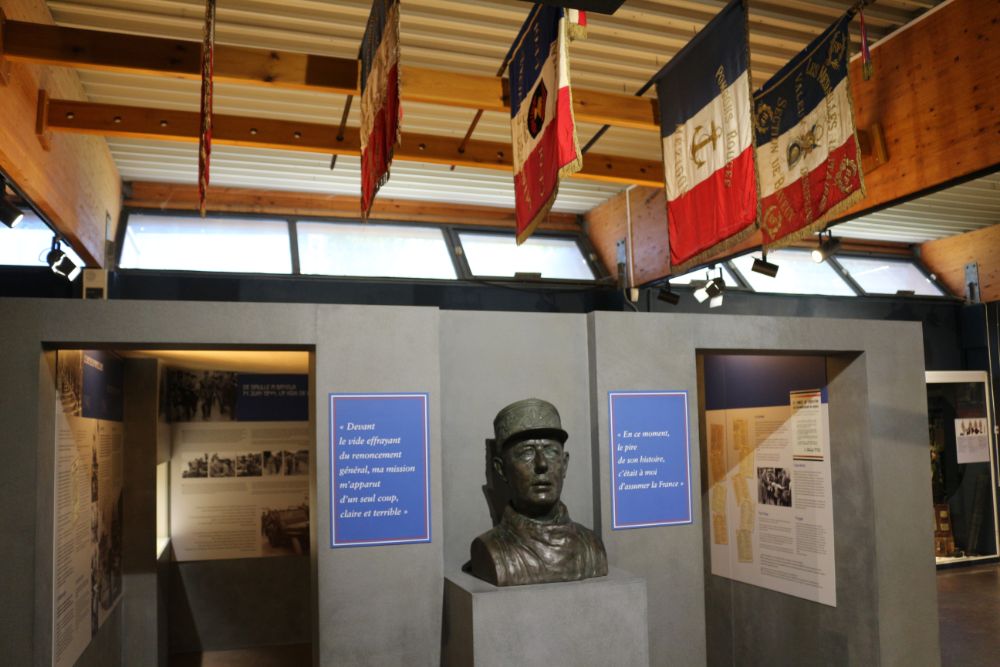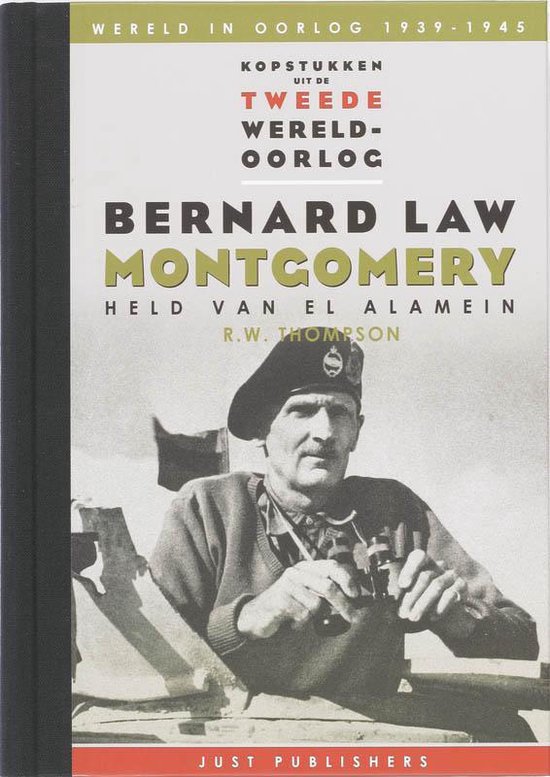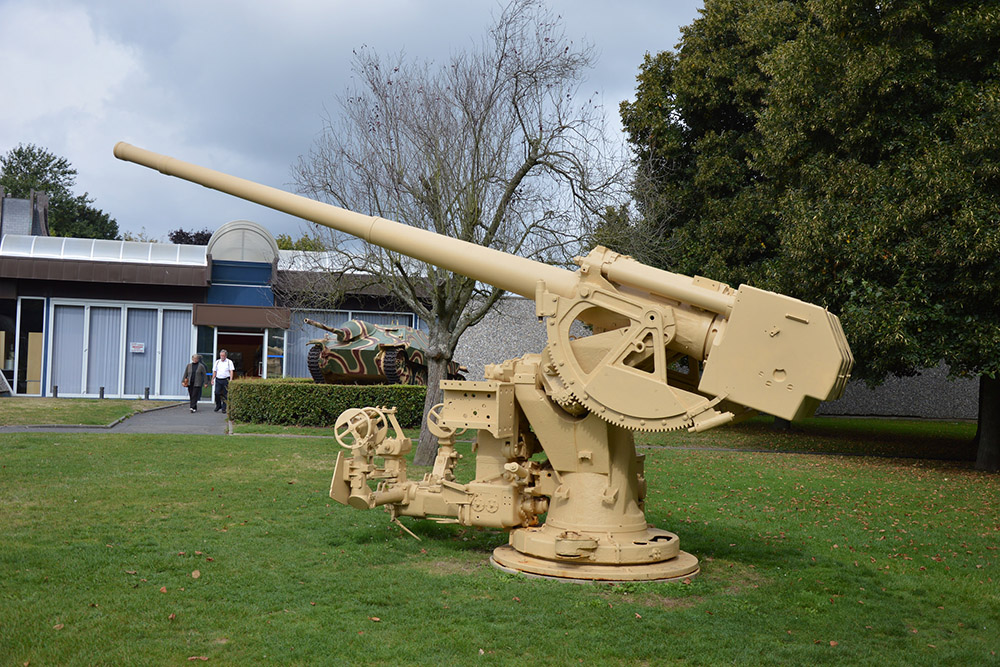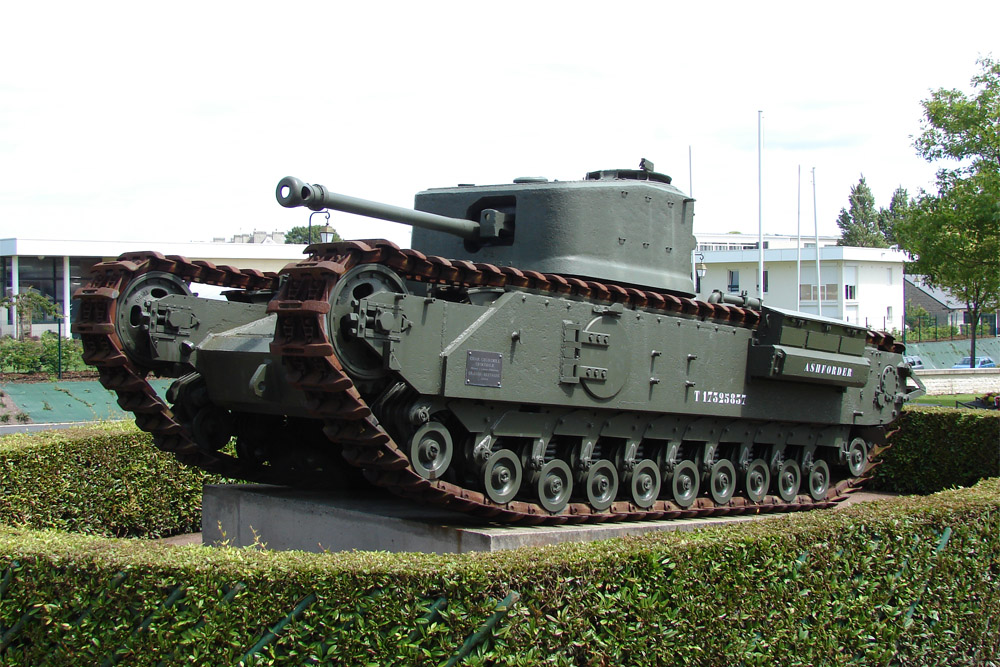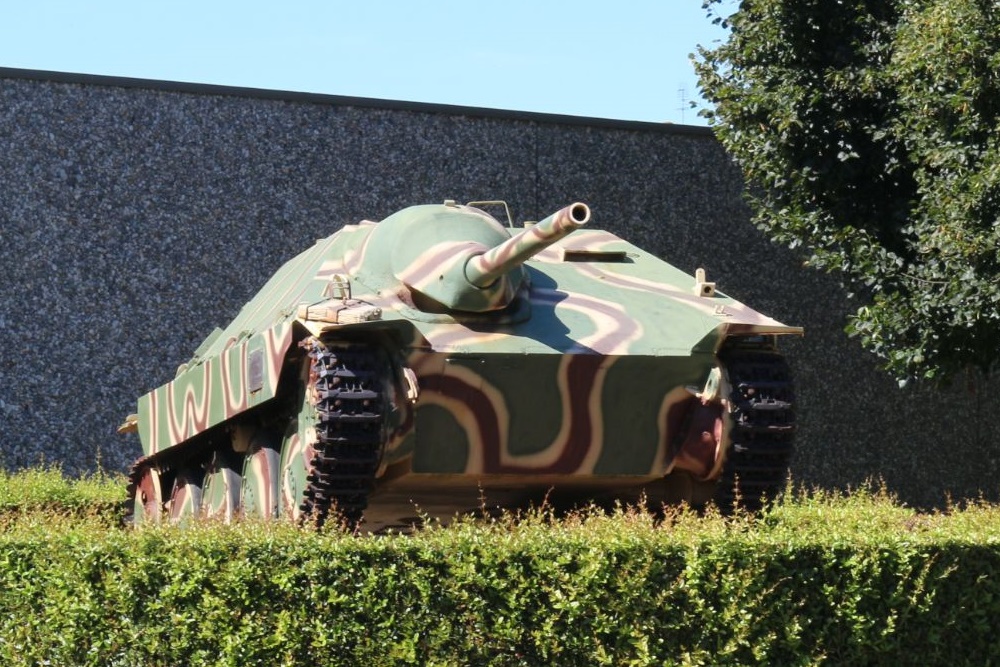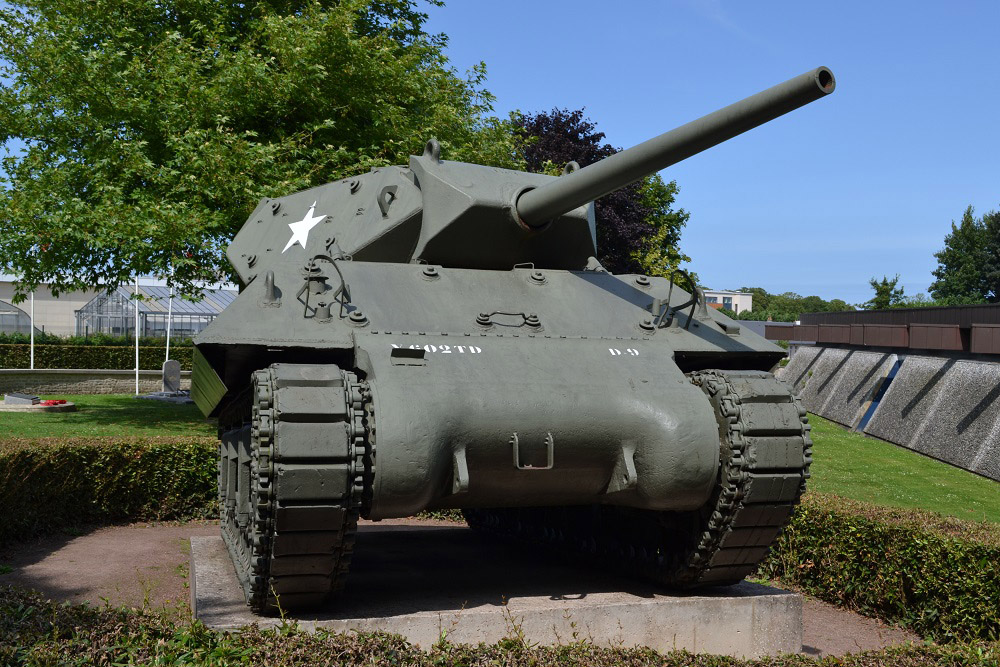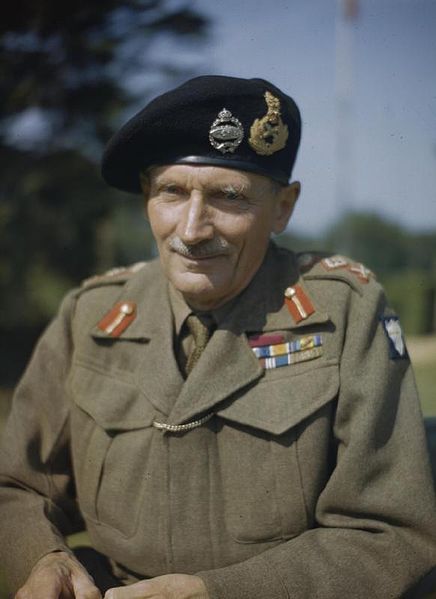Musée-Mémorial de la Bataille de Normandie
Situated in the largest city of the region, the war museum of Bayeux is one of the best of its kind, the "Musée Mémorial de la Bataille de Normandie" (Battle for Normandy Museum).
The impressive buildings are easy to be reached and there is a large parking lot available for both private cars and buses. This is a requirement as trips and excursions by groups are being organized the whole year round; from all over the world visitors arrive to see the museum in the first liberated large city in France. Various delegations of the "British War graves Pilgrimage" pay a visit annually and the museum hosts regularly groups of veterans.Not too far away from the museum various military cemeteries can be found.
In front of the entrance of the museum on the large surrounding grass lawn various well conserved tanks have been placed on pedestals, next to the monument memorizing the liberation of the city of Bayeux. A British Churchill Tank is proudly exposed on one corner of the lawn and in another corner an American Sherman Tank points its threatening barrel at the road.
A real eye catcher is the impressive American Tank Destroyer M-10, a reasonably rare appearance.
Also in front of the museum a German Hetzer Jagdpantzer (Tank destroyer) has been positioned in its dark yellow - reddish brown - dark green camouflaged livery. The British veterans still look at it with respect and awe.
Inside, after we passed the cashier, we enter the corridors with the glass exposition cases. Rows with fully armed and uniformed dummies look us in the face. A bit further on we find show cases with side arms, a whole wall decorated with American paratroopers, a separate showcase with an MG-34 on its tripod including spare barrels and ammunition cases, even more dressed up dummies, flags, standards, badges and decorations.
Through an adjoined corridor we enter the second part of the museum. Immediately your view is captured by the anti aircraft guns, armored vehicles, a Scouts car and a Flak 88. A large collection of transports are gathered together as if you were inside an army camp. You will see mortars in all sorts of sizes and calibers as well as a Goliath Tank (which is a remotely controlled little tank which could be charged with almost 100 kilograms of explosives). You will find German, English, French and American equipment.
The glass walls of the corridors are completely dressed with photographs and original documents, army maps printed on silk or cotton and pictures and pieces of equipment that have been donated by veterans to the museum, often mentioning their sources. Too many documents to go through in detail; you would need a week at least to read them all! Very moving are the personal effects of the soldiers that have perished during the actions in Normandy. On one of these walls you can see the picture of PFC Raymond J. Nellis. He served in the American 5th Infantry Division and was killed near St.Lo on 30 July, 1944. Except the photograph of the unworried, young soldier there is an ‘in Memory card’ as well as his soldiers’ pay book.
Above the picture a telegram, of Western Union, to the parents of Nellis has been placed; "The Secretary of War desires me to express his deep regret that your son Private J. Nellis was killed in action on thirty July in France. Letter follows. Aug 21 1944". Next to the telegram a newspaper clipping has been pinned that tells the story of soldier who was killed at 20 years of age; that he joined the Service on March 1st, 1943, that he measured 6 ft tall, that he was the second to be killed of his village Lyons in the State of New York, that he had three brothers who all three served in the army: Corporal Robert Charles Nellis in Italy, sergeant William Nellis in France and Corporal Charles Nellis in England. The last just had sent him a pic of himself and his British wife. Behind the window of the Nellis family a flag had been exposed with four stars. One star for each son that served his country.
At that moment "Saving Private Ryan" was very close to me.
In some of the pathways in the museum vehicles have been parked. Jeeps, armored cars and half tracks. On the ceiling you will see numerous carefully deployed parachutes. Barrels of a Panther and a Tiger Tank are stretched out on the floor.
A diorama in scale 1: 32 and than, suddenly around a corner, a real life-size diorama: a section of a city, destroyed by fighting… soldiers that walk between the rubble. Bullet shells, lost pieces of equipment and grenades. It reminded me of similar dioramas in the Museum Hartenstein in Oosterbeek and the army museum in Diekirch.
You also will be able to see personal letters of, amongst others, Field Marshall Montgomery.
The last room has been dedicated to aviation. A crashed Spitfire has been transformed into a diorama in full size (including sods of turf). There are also many dioramas on scale 1:32 about actions like for example the boarding of the paratroopers in their C-47. In a corner a tailfin with a swastika has been exposed.
Every hour you may visit the movie show in the museum. The picture shows parts of the museum and also depicts in detail the invasion of Normandy and the following battles. The voice of Eisenhower addressing his troops: "You are about to embark upon a Great Crusade".
The museum in Bayeux is an absolute must for those that want to elaborate on the history of the war in Normandy.
For current visiting hours, please visit the website of the museum.
Do you have more information about this location? Inform us!
Source
- Text: Don van den Bogert
- Photos: Lennard Bolijn
Related books
Nearby
Museum
- Musée-Mémorial du Général de Gaulle - Bayeux
- Musée des Épaves sous-marines du Débarquement - Commes (Port-en-Bessin)
- Liberators Museum - Normandy 1944 - Arromanches-les-Bains
Point of interest
- M10 Wolverine Tank Destroyer - Bayeux
- Churchill Crocodile Tank - Bayeux
- M4A1 Sherman Tank Bayeux - Bayeux
Monument
- Military Police Memorial - Bayeux
- Mémorial des Reporters de Bayeux - Bayeux
- Place Général de Gaulle Memorial - Bayeux
Cemetery
- Commonwealth Memorial of the Missing Bayeux - Bayeux
- Commonwealth War Cemetery Bayeux - Bayeux
- Commonwealth War Graves Bayeux - Bayeux
